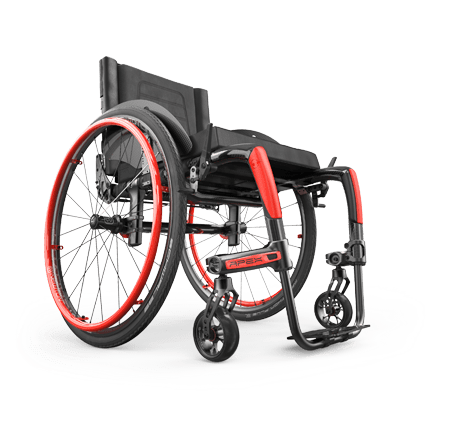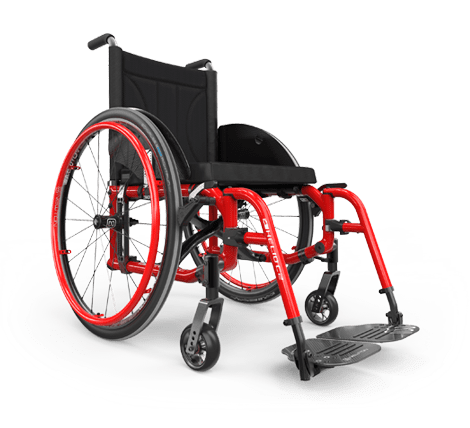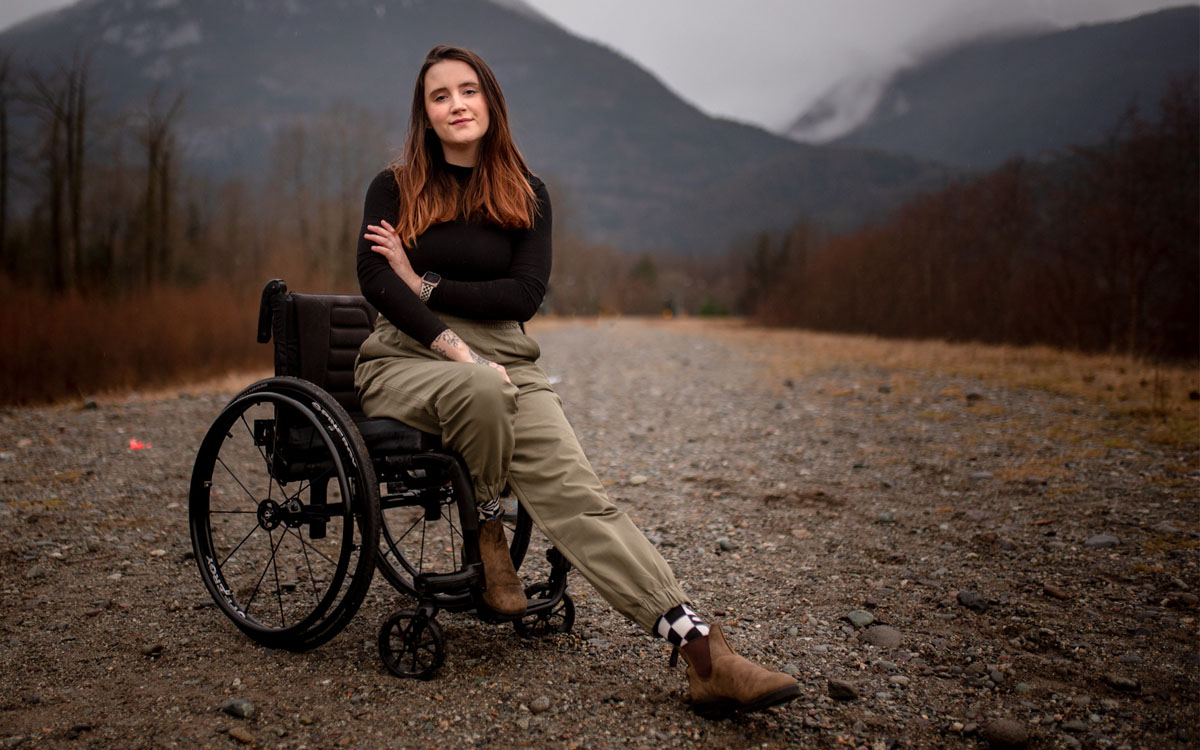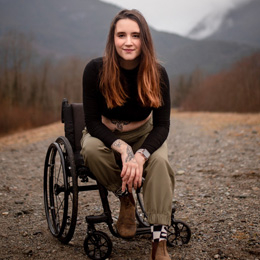I wish there was an exact moment when I knew it was time, but, like many others, it came as a surprise. It was less of an “I need it now,” and more of a blind act of faith.
What led me to my wheelchair?
After my final spinal cord surgery, my neurosurgeon announced that there was no more use for surgery in my case, and it was time to wait and see how my body coped with what damage had been done. I had nerve pain that flared with long walks. Things like Christmas shopping, or a walk through the zoo, left me with pain, but otherwise, I felt “fine.”
As the years passed, my nerve pains grew, and soon every step ached and was regularly accompanied by spasms. My legs tolerance and stamina also began to diminish, leaving me dreading leaving the house and my bed. Something that just wasn’t manageable when caring for three young children (or when trying to live life in general).
As many people do, I had become accustomed to the pain and thought I managed it well, but I just wanted a small amount of support. Initially, adding some joint support, splints, and taping was recommended, which helped manage my dislocations, but it didn’t take the pain I was having down to a manageable level. I also had a hospital transport chair for really bad, but, more often than not, it aggravated my pain more than alleviated it.
While I was in my final pregnancy, I decided to have a talk with my doctor. I had such pride in my ability to smile through my diagnosis and hated asking for help, but at that point, I was desperate to enjoy movement and life again. I could not walk from our home to the bus stop without losing feeling in my legs or sending them into a long bout of spasms. I couldn’t run or play very long with my kids outside without the feeling and sometimes the movement, leaving my feet and legs. I was at that point referred to my local city’s spine center, where I would eventually meet with my new incredible team.
Window Shopping and Instagram Help
While waiting for my appointment, as my mobility continued to decrease, I decided to visit my town’s local medical supply store, where I explained my situation and went to a “wheelchair window shop.” Well… to say I was amazed at the advancements since my first experience as a teenager post-operative would be an understatement. The chairs that once weighed more than I could lift, I could now lift easily. They weren’t scary. So, I went home, watched a large amount of YouTube videos of wheelchair comparisons, and “What to consider when buying your wheelchair,” as well as I reached out to my friends in the wheelchair community on Instagram, asking questions, and having them reach out to their communities. I was so thankful to have had many amazing people send me their recommendations.
I returned maybe a week later to the store and explained what I thought my “MUST HAVES” are in a wheelchair.
- I HAD to be able to lift it one-handed. So, it had to be light.
- I wanted something narrow
- I wanted the ability to add extras like a freewheel
- I would like removable armrests for breastfeeding
- And finally…. I NEEDED it to be built to last.
The wheelchair they recommended to me was an Apex. Specifically, the Apex Carbon Wheelchair from Motion Composites, as it checked every one of my boxes. They even happened to have the Apex Aluminum there, and just those few moments sitting in the chair, I was blown away by how much wheelchairs had changed and how incredible it was compared to my hospital chair.
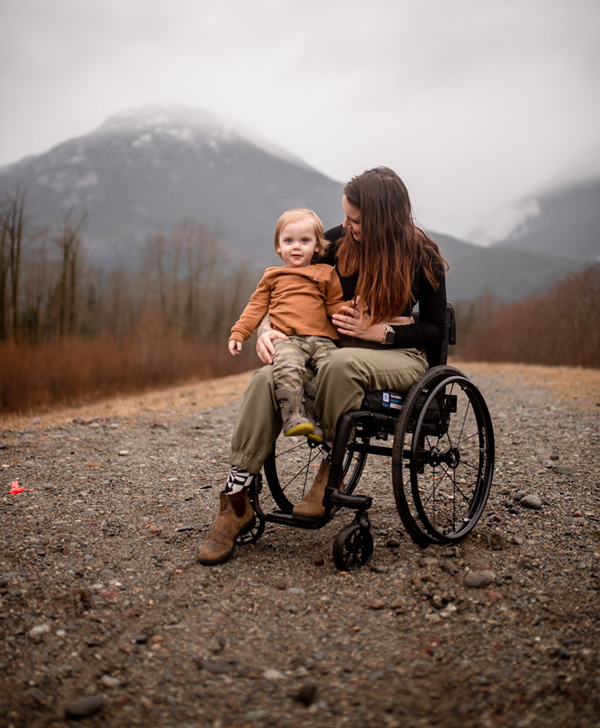
Professional Assessment and Ordering Process
A few weeks later. I met with my physiotherapist and physiatrist for my assessment. Since my referral, my mobility had decreased to the point where I could no longer walk through the grocery store or library. I am very privileged to have access to a center where the vendors are fully involved in assessing needs and have the knowledge of what aids are available. I was asked about my goals and hopes for what a wheelchair would help with. They told me the differences between a rigid and folding wheelchair and recommended the rigid chair to me as it would better suit the extra accessories I hoped to get in the future. We discussed the size and weight of the chairs. I learned even more about what goes into a custom wheelchair.
Near the end of the appointment, I was asked if I had done any research beforehand or if I wanted to go home and do some before making a choice. I explained why I thought the Apex Carbon Ultralight Wheelchair would be my choice and I didn’t feel I needed to research anything else. Everyone agreed that it would fit my needs perfectly. I left my appointment that day armed with crutches to aid my walking, and due to come back a week later for final measurements before ordering my chair.
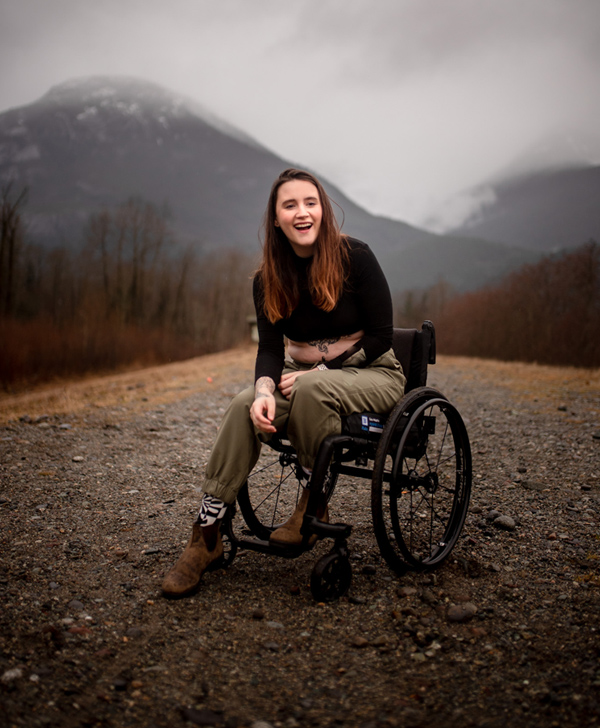
My Trial Chair
Another experience my team provided me with was a trial chair. I was lent an Apex Carbon for a few days, encouraged to utilize it as I would in my daily life and see if it was a good fit. So, I did just that. I took my kids out for doughnuts and to the library. I went into the grocery store and for a stroll around my neighborhood. I did it all pain-free. Looking back now, I believe that this was where my mind transitioned from “I am weak and need a wheelchair” to “Look at this joy I get to experience with this chair!”
Funding and Ordering
Once my chair measurements were sorted and my customizations were in order, next came funding for my wheelchair. Unfortunately, like most Canadians, my provincial healthcare does not assist financially with mobility aids. I was so thankful that my partner’s work in healthcare paid a decent amount of the final cost. However, that took many hurdles and nearly a year to sort through. The vendor I worked with was pleased to work with me and
split the cost of my chair into lump sums. Shortly afterwards, I finally met my chair!
So… What’s Changed?
It’s hard to put into words. The best way I can explain how my life has changed is … my days are brighter! Having a disability, no matter what it looks like, is a full-time emotional and physical rollercoaster. I think I had just become so used to it that I could not see what I was missing out on by insisting I was “ok.” Nowadays, though, I want to go out and enjoy my time out of bed. For example, I visited the aquarium regularly with my family. Still, every time I would leave in so much pain and be bedbound for days afterwards, I never truly experienced it. On my first visit to the aquarium with my wheelchair, I noticed the hidden wonders and joys my children’s faces held. I was present on the car ride home and made dinner that night. And sure, there are days when a wheelchair is an annoyance, like in the snow or pouring rain, but it is still worth using every time. This change allowed me and still gives me the freedom to enjoy my days.
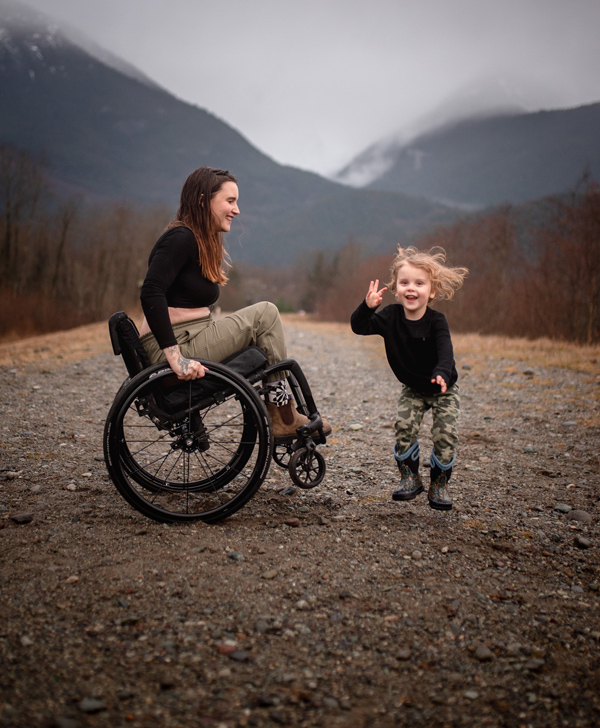
What about you?
My biggest advice is if it’s time for you to have a wheelchair, or just what having one is, ask whomever you can! Speak to your medical team, message wheelchair users on Instagram – including me – and watch the many available videos. Listen to your body, test chairs, and other aids, and advocate for those who can advocate for you. It is daunting … but a community is out there to support you on this journey.
Make sure to read this article about Reedan’s life as a mom with disabilities.




